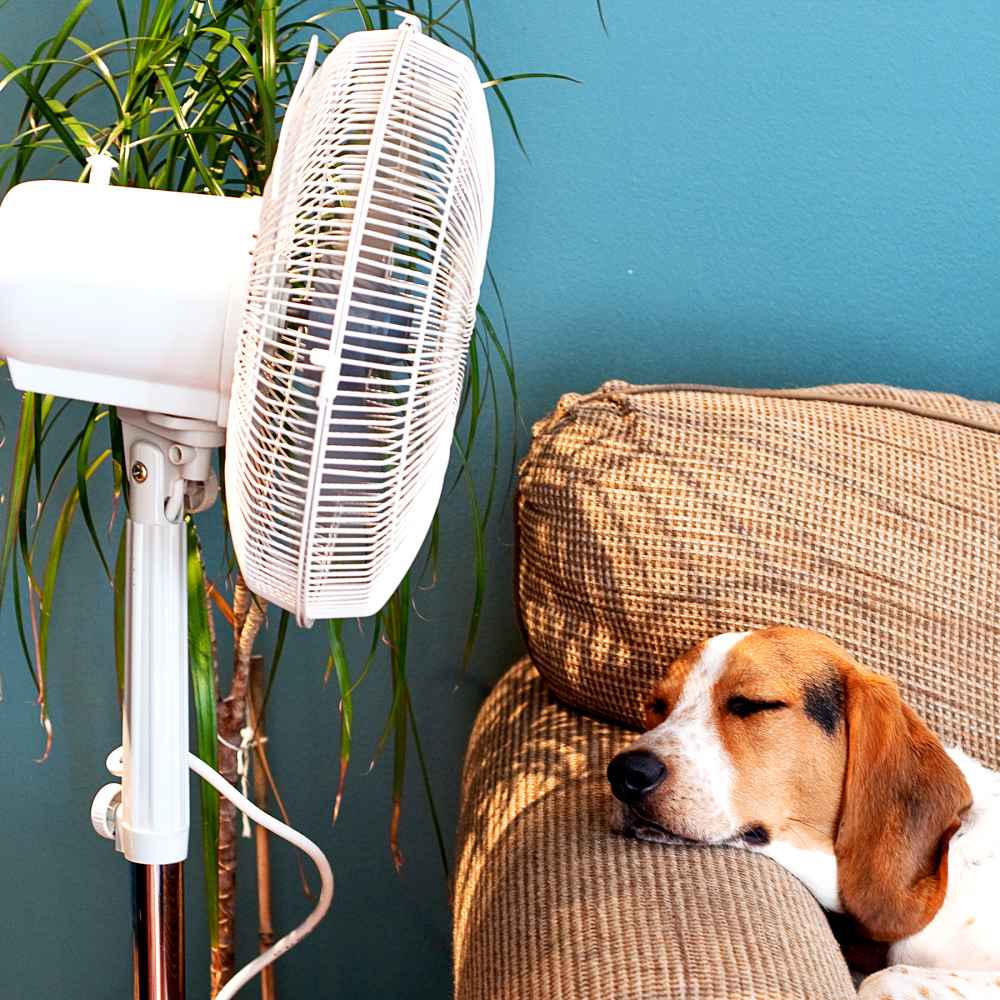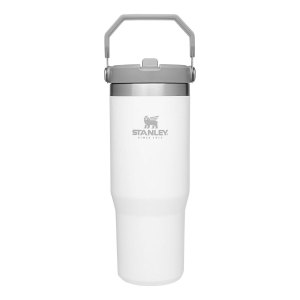
Your favorite pair of flip-flops and jean shorts have cycled back through your wardrobe, you have a sudden, insatiable taste for any iced beverage, and with every passing week the The Bachelorette is seriously heating up. All of this equals one magnificent thing: It’s summertime!
It’s also time to get smart and creative with the ways you keep your pet cool inside and outdoors. We asked Banfield Pet Hospital for their best tips for keeping your cuties comfortable — and just FYI, it’s not only a matter of comfort, it’s a matter of good health and safety.
“Sometimes people aren’t aware of the dangers hot weather can bring for pets, so it’s important to take certain precautions to help keep our furry friends safe,” says Vancouver, Washington-based veterinarian Dr. Andrea Sanchez. “Just as is the case during colder months, it’s imperative that we take extra precautions with our pets as the weather warms this summer. Remember, if it’s too hot for you, it’s too hot for your pet.”
Read on for more ways you can help your pet beat the heat.
1. Always provide plenty of water and ample shade.
You get parched on hot summer days and so does your pet! So if you’re refueling, make sure you’re offering them water as well, and make sure there are shady spots available for breaks on your summer adventures.
“Pets should always have access to ample fresh water, but it’s even more imperative during warm weather,” Sanchez says. “The best way to avoid heatstroke is to keep pets cool by providing plenty of fresh, cool water and access to shaded areas, especially when outdoors. Some dogs love running through the sprinklers or drinking from the hose while you’re watering the garden!”
2. Know the signs of heatstroke.
Heatstroke is a medical emergency that requires immediate treatment by your veterinarian. Symptoms are exaggerated panting, rapid heartbeat, high fever, vomiting, staring, anxious expression and warm, dry skin.
“If your pet shows any of these signs, or you suspect your pet has heatstroke, contact your veterinarian or an emergency animal hospital immediately,” Sanchez advises, adding that pets may become overheated and quickly suffer from heatstroke when they are exposed to too much heat on sunny, hot or humid days. Animals that are more at risk because they cannot cool themselves effectively include dogs with short snouts, such as bulldogs, Boston terriers, pugs and boxers – and cats with longer fur, such as Persians and Himalayans.
3. Never keep pets in cars or in direct sun on a summer day.
You’ve heard the horrific stories of people leaving pets in cars with horrible consequences — don’t become one of those statistics. Leave your pet at home when you’re out and about in the heat — it’s just a safer place for them to be.
“Even with the windows slightly open, the temperature inside a car can soar to 120 degrees Fahrenheit or more within minutes,” she says. “These conditions can be fatal to a pet within 10 minutes or less.”
4. Change things up with ice cube fetch!
Cool things down a little with a cute twist on your pet’s favorite pastime. “If your pet likes to chase toys or play ‘fetch,’ toss an ice cube instead of a ball, and let your dog – or cat – lick it until it’s gone!” Sanchez suggests.
5. Protect those precious paws.
Did you know your dog has built-in cooling mechanisms? The bottom of your dog’s paws and the spaces between their toes function to keep them cool. Splashing around in baby pools full of water or hosing down the driveway and sidewalk can make a big difference, Sanchez says, and walking on hot surfaces like asphalt can be super dangerous.
“Although the pads on a dog’s feet provide more protection than the skin on our feet do, they are not nearly as protective as the shoes we wear and dogs can develop significant burns on their feet from hot pavement,” she says. “A good rule of thumb when it comes to hot pavement is your thumb. Try touching the ground you are planning to have your dog walk on – if it is painful or uncomfortable for you, go somewhere else or try booties if your dog will tolerate them.”
6. Keep exercise to a minimum.
Now is not the time to have intense fetch marathons in the blazing heat. “Exercise on warm days should be limited to short periods of time and ideally, during the coolest part of the day (early morning or after sunset),” Sanchez explains. “Pet owners should keep walks to a gentle pace, and ensure there is plenty of cool water available. For those who like to run or bike with their pet, it’s important to continually watch for signs of overheating.”
7. Keep your pet appropriately groomed.
Don’t let your summer fun overshadow important things like regular haircuts. “Keeping your pets appropriately groomed is important year-round, but a ‘summer cut’ can help those with longer coats especially stay cooler in the warmer months,” Sanchez says. So talk to your groomer about options.
8. Protect vulnerable pets from the sun’s rays.
Pets with light skin or hair need to cover up just like humans do, so talk with your veterinarian about sun protection and sunscreen (there are brands specially formulated for pets).
“Pets can get sunburned – particularly if they have light skin and hair, which can cause pain, peeling and skin cancer,” she explains. “As such, it’s important to ensure you’re protecting your pets from excess sun by providing ample shade, given human sunscreen is not recommended for our four-legged friends!”
9. Avoid muzzles on dogs because panting is important.
How’s this for canine sophistication: Your dog evaporates the majority of their heat from their tongue! Therefore, it’s extra important to “avoid muzzles or even gentle leaders if your dog can’t fully open his or her mouth in the heat to pant,” Sanchez says.
10. Keep a close eye on kitties when it’s hot.
Panting could translate to serious problems for cats. “Be aware that panting in cats is not normal. If you see your cat panting, it’s most likely a life-threatening emergency that requires you to get your cat into an air-conditioned vehicle and transport them to the nearest emergency veterinary hospital right away,” she warns.
Us Weekly articles and content are for informational purposes only. Nothing contained in Us Weekly articles and/or content is or should be considered, or used as a substitute for, veterinary or professional advice, diagnosis or treatment. If you believe your pet may have a medical emergency, call or visit your veterinarian or your local veterinary emergency hospital immediately.

